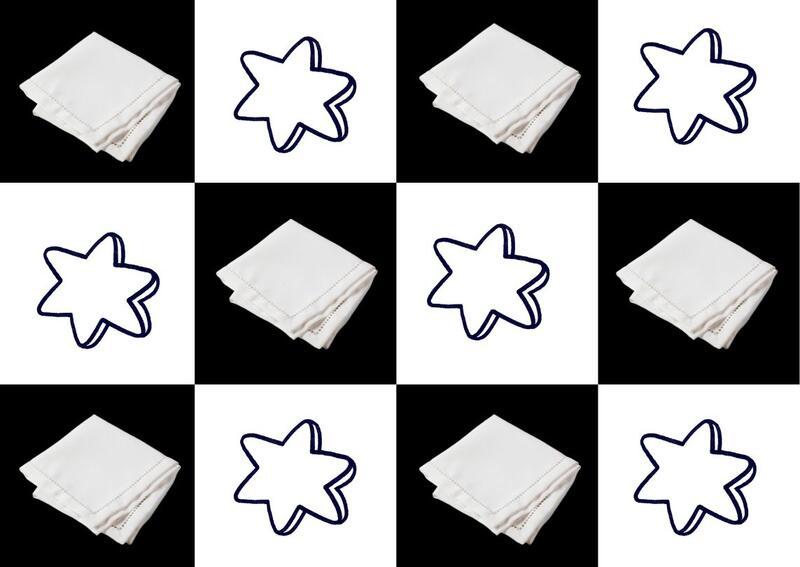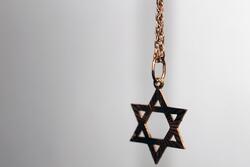Oma Irene's Napkin
Growing up, my mother’s family had an unmistakable fondness for heirlooms. My maternal grandparents’ house is filled with old cups, jewelry, books, tableware, and tablecloths that have been passed down from my great-grandmother, great-great-grandmother, and even beyond. Each item is associated with a person who once owned it, and a story. Most of the items came to America with my relatives when they left Germany in the 1930s.
About a year ago, my mother asked me to get her something from her jewelry box. There, I noticed a single napkin. Further inspection showed it to be linen and somewhat worn with time to a light gold color from its original white, and with some detail work at the corners. The napkin seemed pretty clearly out of place, so I asked my mother if it was in there by accident and if it should be put with the other napkins and tablecloths. She told me to leave it in the box; the napkin was from my great-grandmother Oma Irene Darmstädter. Because I was in a rush I didn’t ask her any more questions or give it much thought.
My mother shares her family’s fondness for heirlooms, albeit to a lesser extent. Much of the reason for this is practical. She (and her sister, my aunt) is another generation removed and has received fewer of the heirlooms. In addition, while we do occasionally host a large family meal on a Jewish holiday, most of those meals still occur at my grandparents’ or their contemporaries’ houses, which is when these heirlooms often get used. I have grown to appreciate my family’s fondness for these things, and I understand their personal significance, but I struggle to feel the same apparent appreciation and connection because I never met most of these people. Many are now stories of stories because my mother never met most of them either. She learned about them from her parents. I learned those stories from my mother and grandparents, in turn. Where some of these items seem to stand in for the people who once had them, to me they stand in for stories of those people, still meaningful but, perhaps unfortunately, necessarily different.
Judaism in general, and my family in particular, emphasize the value of communal meals. You can see it in the way Seders or Shabbat meals are conducted, in the way synagogue concludes with kiddush, and you can see it sprinkled throughout our practices in so many other ways. I’m fortunate to live near many of my aunts, uncles, and cousins, and so I associate the Jewish holidays with the large, elaborate gatherings held at my relatives’ houses. Particular emphasis is put on setting the table for these occasions. So much of my Jewish and familial identity is tied to these meals.
I revisited that napkin as I was preparing this essay, and asked my grandmother whether the heirlooms reflect anything about our family’s long-running feminist values. She thought about it and initially said that, in a way, they actually reflect the opposite of feminist ideas and reinforce traditional gender roles: “The women in our family made the meals and set the table. That’s where these items are from and how we use them now.” However, a little while later, she texted back with some pictures of silver jewelry I had never seen before.
My grandmother explained that these items were from my great-grandmother, “Omi.” She had escaped Germany with her family and first moved to Quito, Ecuador. There, Omi had worked as a nurse to support her entire family. They later emigrated to the Upper West Side of Manhattan, where she lived for the rest of her life. The jewelry pictured are heirlooms from her time in Quito.
These items help fill out the other side of the role of women in my family. My family values Jewish traditions, particularly family gatherings and meals. And women in my family are very much at the center of that, in a very traditional—some might say old-fashioned—way. We have heirlooms, like Oma Irene’s linen napkins, or silverware, that reflect that piece of us. However, Omi’s jewelry from Quito reflects the fierce independence and modern feminist values we also share. They represent Omi serving as her family’s primary breadwinner in the 1930s and 1940s, at a time when that was extremely uncommon.
I like to wonder how Oma Irene used her napkins and what happened to the rest of the set. Did she use them for meals with family, like my family does now? Did she invite some of the women she worked with in the women’s homes she ran in Germany to meals? I’ll never know the answers to these questions, and that’s okay. If nothing else, the napkin already served an important purpose. It seems only right, then, that a seemingly out of place napkin in my mother’s jewelry box led me to discover an important piece of my family’s feminist history.
This piece was written as part of JWA’s Rising Voices Fellowship.








